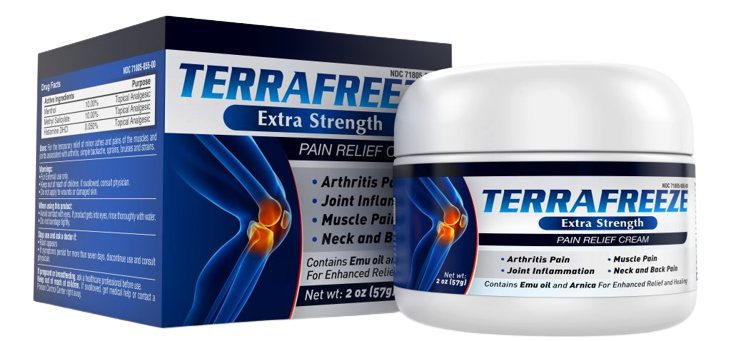Millions of Americans suffer from back pain. And the ones that we know, are tired of it. They are fed up with trying things that don’t work. They’re sick of buying back pain cream and items that aren’t for their specific type of pain.
Common Causes of Back Pain
Back pain is a common health issue that can significantly impact quality of life. Understanding the most frequent causes of back pain is crucial for preventing and effectively treating it. Here are five common factors that can contribute to back pain:
- Muscle Strain and Sprain: Abrupt movements, lifting heavy objects, or poor posture can lead to muscle strains or sprains in the lower back, causing acute or chronic pain.
- Herniated Discs: When the gel-like core inside a spinal disc shifts out of its normal position, it can exert pressure on surrounding nerves, causing sharp pain or numbness in the back and limbs.
- Degenerative Conditions: Conditions such as arthritis, ankylosing spondylitis, and spinal stenosis can lead to degeneration of spinal structures, resulting in chronic back pain and loss of mobility.
- Posture Issues: Prolonged poor posture can exert excessive pressure on the spine, leading to muscle strain and lower back pain.
- Lifestyle Factors: Habits such as lack of physical activity, being overweight, smoking, and increased stress can contribute to back pain by weakening back muscles and affecting overall spinal health.
By understanding these common factors, it is possible to take preventive measures and adopt practices that promote back health, reducing the risk of back pain and improving overall well-being.
Identifying Back Pain
Understanding the nature of your back pain is essential for seeking appropriate treatment and relief. Here are key aspects to consider when identifying your back pain:
Types of Back Pain
- Acute vs. Chronic: Acute back pain typically lasts for a short duration, often due to injury or strain, while chronic back pain persists for an extended period, usually beyond three months.
- Location-Based Pain: Different areas of the back can indicate various underlying issues. For instance, lower back pain may be linked to muscle strain, while upper back pain may be associated with spine-related problems.
- Radiating vs. Localized Pain: Radiating pain extends from the back to other areas of the body, such as the legs or arms, suggesting potential nerve involvement, while localized pain is confined to a specific area of the back.
Symptoms to Watch For
- Sharp vs. Dull Pain: Sharp, stabbing pain can indicate nerve compression or injury, whereas dull, aching pain may be linked to muscle strain or joint issues.
- Tingling or Numbness: Sensations of tingling or numbness, especially in the extremities, could signify nerve compression or damage.
- Limited Range of Motion: Difficulty in moving or bending due to pain may point to underlying musculoskeletal or spinal issues.
By paying attention to these aspects, individuals can better articulate and understand their back pain, aiding healthcare providers in diagnosing and devising effective treatment plans.
Treatments For Back Pain
When it comes to addressing back pain, conventional treatments play a crucial role in providing relief and promoting healing. Here are some key conventional treatment options:
Medications for Pain Management
- NSAIDs (Non-Steroidal Anti-Inflammatory Drugs): These medications help reduce inflammation and alleviate pain associated with back issues.
- Muscle Relaxants: These medications are aimed at easing muscle spasms and promoting relaxation in the affected area of the back.
- Topical Treatments: In addition to oral medications, topical treatments such as TERRAFREEZE provide targeted relief by directly addressing pain and discomfort in the affected area.
Physical Therapy Techniques
- Stretching and Strengthening Exercises: Physical therapy often involves specific exercises to improve flexibility and strengthen the muscles supporting the spine, thereby reducing the risk of future back pain.
- Manual Therapy: Techniques such as massage, mobilization, or manipulation performed by a qualified physical therapist can help alleviate muscle tension and improve mobility.
- Heat and Cold Therapy: Alternating between heat and cold applications can aid in reducing pain and inflammation, promoting circulation, and relaxing muscles.

By integrating these conventional treatments, individuals can experience effective relief and support in managing their back pain, promoting enhanced mobility and overall well-being.
Lifestyle changes to help back pain
Making lifestyle adjustments can significantly contribute to alleviating back pain and improving overall spinal health. Here are essential modifications to consider:
Ergonomic Adjustments in Daily Activities
- Workstation Setup: Ensuring that the workstation is ergonomically optimized can help maintain proper posture and reduce strain on the back during extended periods of sitting.
- Proper Lifting Techniques: Implementing correct lifting techniques, such as bending the knees and keeping the back straight, can prevent unnecessary stress on the back muscles and spine.
Exercise and Physical Activity Recommendations
- Low-Impact Cardiovascular Exercise: Engaging in activities like swimming, walking, or cycling can promote overall fitness without placing excessive strain on the back.
- Core Strengthening: Incorporating exercises that target the core muscles, such as planks and bridges, can help stabilize the spine and alleviate back pain.
By adopting these lifestyle modifications, individuals can actively contribute to reducing back pain, improving physical function, and enhancing their overall quality of life.
Dietary Considerations for Back Pain Relief
When addressing back pain, dietary choices play a crucial role in managing inflammation and promoting overall health. Here are key dietary considerations to prioritize:
Anti-inflammatory Foods: Incorporating foods with anti-inflammatory properties, such as fruits, vegetables, fatty fish, and nuts, can help reduce inflammation and alleviate back pain.
Importance of Hydration: Staying adequately hydrated is essential for maintaining spinal health, as it supports the cushioning discs between the vertebrae and promotes overall bodily function.
Weight Management Strategies: Maintaining a healthy weight through balanced nutrition and regular physical activity can help reduce strain on the spine and lower the risk of back pain.
By focusing on these dietary considerations, individuals can make positive nutritional choices to support back health, manage inflammation, and enhance overall well-being.
FAQ
What causes back pain and what are the best ways to prevent it?
Back pain can be caused by various factors such as muscle strain, disk damage, degenerative conditions like osteoporosis, aging, and hereditary factors. Preventive measures include keeping back muscles strong and maintaining proper posture through activities like exercises and avoiding movements that could lead to a back injury.
How can a chiropractor provide back pain treatment?
Chiropractors can provide back pain treatment through spinal adjustments, manipulation, and other manual techniques aimed at reducing pain and improving function.
What are the different types of back pain medications available?
Different types of back pain medications available include nonsteroidal anti-inflammatory drugs (NSAIDs), muscle relaxants, and topical treatments such as TERRAFREEZE.
Are there specific exercises to avoid back pain?
Certain high-impact activities or exercises like heavy lifting or specific yoga postures should be approached with caution to prevent exacerbation of back pain.
Can stress worsen back pain, and are there natural remedies that effectively alleviate it?
Stress can worsen back pain due to increased muscle tension, but natural remedies such as mindfulness, meditation, yoga, and maintaining a healthy diet can effectively alleviate it.
What are the warning signs that back pain requires immediate medical attention?
Warning signs that back pain requires immediate medical attention include severe or worsening pain, loss of bladder or bowel control, numbness or tingling in the groin area or weakness in the legs.
How does aging affect back pain, and is back pain hereditary?
Aging affects back pain as can lead to weakened musculoskeletal structures and increased vulnerability to back issues, genetic factors can play a role in predisposing individuals to back pain.
Is it normal to have occasional back pain, or should I always seek medical help?
Occasional back pain is common; however, if it, worsens, or interferes with daily activities, seeking medical assessment is recommended.
TERRAFREEZE is all you need to get rid of the pain and discomfort of back problems, go on with your daily activities, and more. The powerful ingredients in Terra freeze are formulated to work together to give you immediate relief from pain and aid in the recovery process. Terrafreeze improves the mobility and flexibility of the affected joints, nerves, and muscles without side effects.***

If it’s not everything we say it is (and a whole lot better), simply return within 180 days for a full refund. No questions asked.
Don’t Just Mask The Pain Treat The Pain!

